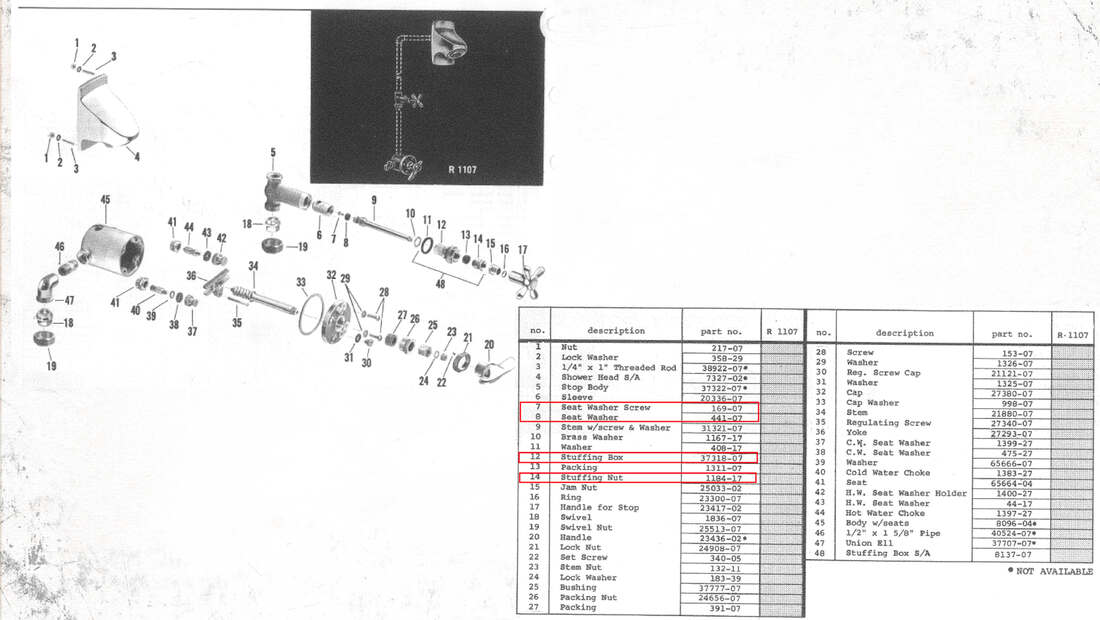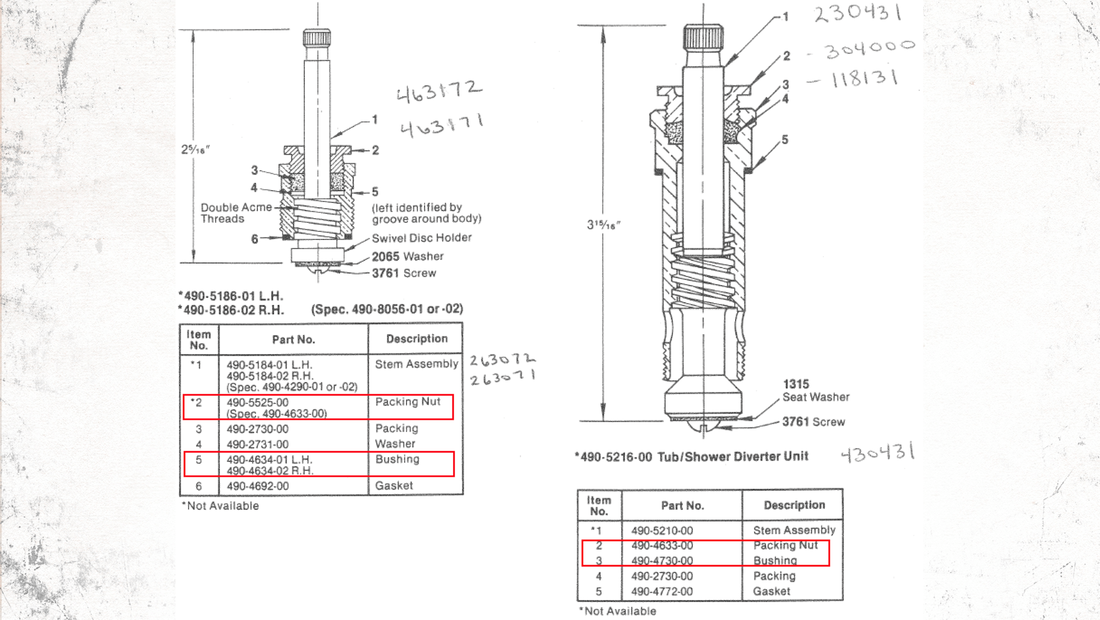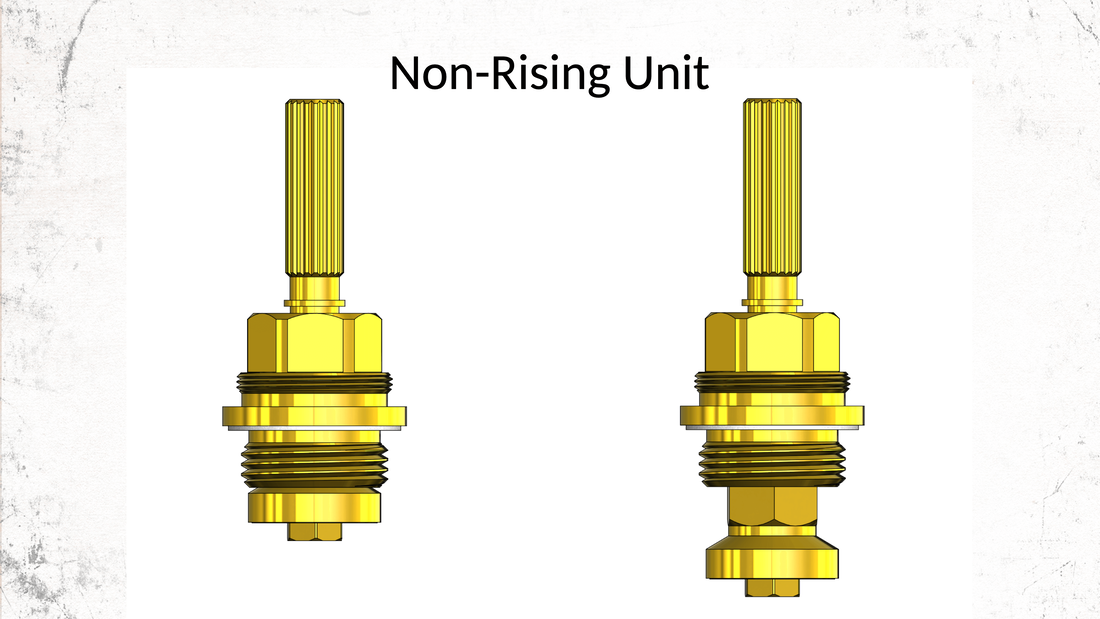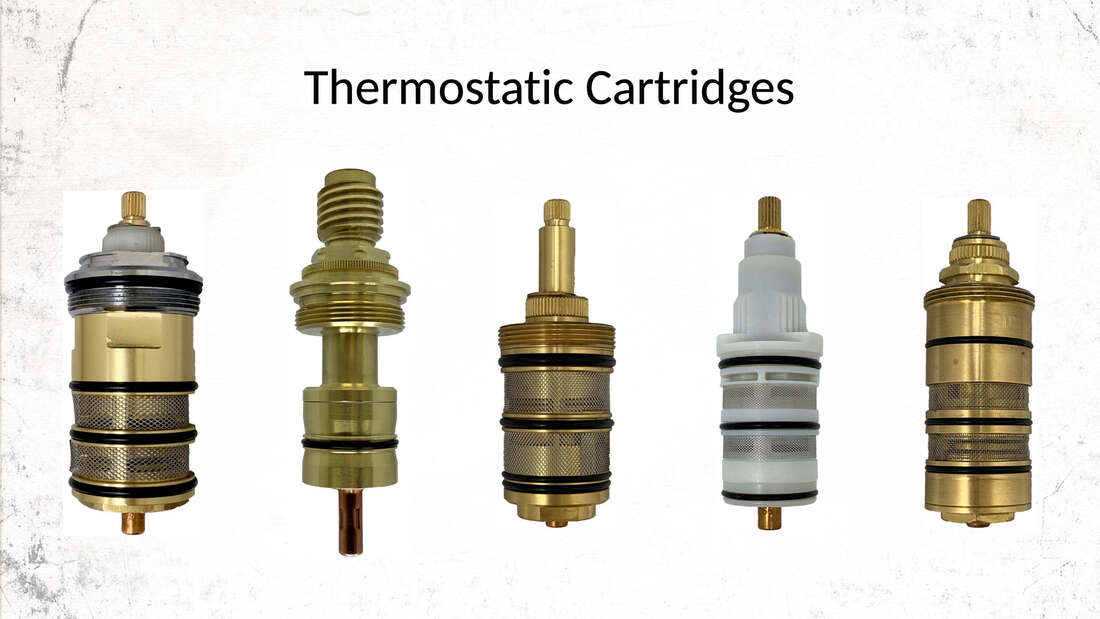|
When it comes to identifying stems, valves, and cartridges, it is helpful at times to know the Terminology of those parts. When you take a look at the historical usage of terminology in the plumbing industry, different words were calling the same parts different things - it can get confusing quickly. So, let's alleviate some of that confusion by illustrating common plumbing industry terminology: You can see in this old American Standard parts breakdown where terms like “seat washer screw, seat washer, stuffing box, and stuffing nut” were used.
Terminology at BWSC
Here are some other key identifiers that we like to use for identification purposes:A single-lead thread will have one start or beginning. Since it's just one beginning, it will turn slower than a double-lead thread that has two beginnings. Typically, when lever handles were used, the manufacturer wants the stems to turn faster, so double-lead or even triple-lead threads are incorporated. Looking at the matching Crane stems below, Crane used the single-lead threads when they provided round, cross, or knob-handles, and they used the double-lead threads when they provided lever handles. You can also see on these stems that the threads have a different angle or pitch - these are 60˚ Stub Threads. On these two stems, you can see one is a 60 Degree Stubbed Thread, and the bottom one, while similar to the 29° ACME Threads, is actually modified square and does not have much of an angle on the pitch. Ceramics, Non-Rising Stems, Thermostatics, and Newer Cartridges
And in even more modern cartridges - thermostatics - there is an entirely separate set of components that are much more complicated than other cartridges. These cartridges control temperature regardless of water pressure or volume. Although thermostatic cartridges can occasionally include volume control, they typically only control temperature. Thermostatic cartridges most commonly use a wax element as the temperature control motor. The motor is attached to a shuttle that regulates the volume of hot and cold water. Additionally, the use of springs and plungers allow the turning of the stem to control the temperature by adjusting the shuttle. We hope this quick article will be a helpful resource for you and your team. Our goal here is to give you more information to help with the identifications of a cartridge. If you still get stumped, you can always email or text a free parts identification request to:
To learn more about our Parts ID process, check out our help desk video and download our free Stem Identification Guide by clicking the button below:
|
Pages
|
Get in Contact:2550 E. Platte Ave
Fort Morgan, CO 80701 Phone: 970-867-3858 Toll Free: 800-767-5552 Hours: 7:30 AM to 5:00 PM (MDT) Help Desk Email See what we're doing:
|
Proud Platinum Vendor Member:
Winner of the 2022 IMARK Product Award for Excellence in Product Quality and Innovation
Proud Vendor Member:Winner of the NAPSD John Mueller Outstanding Vendor Award in 2009, 2012 and 2022.
Proud Preferred Vendor:
|











 RSS Feed
RSS Feed





